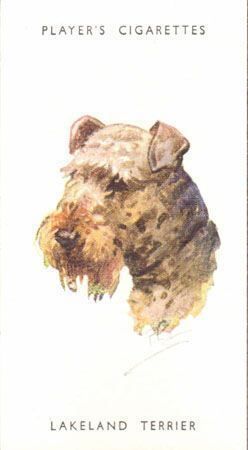
An insane drive to chase critters bigger and stronger than themselves is certainly one hallmark of a terrier, but in the 18th and 19th century, educated people of good breeding and social standing didn’t write about these canine stalwarts of lordly estates and humble abodes, they simply weren’t as “noteworthy” (read: glamorous) as an upper crust hunting hound. Still, a few anecdotal gems were noted at the time and passed along. One of our favorites tells of Lord Lonsdale’s terrier who burrowed 23 feet under solid rock in pursuit of an otter. It took a team of men three days of performing blasting operations into the rock to rescue the dog.
There were others who had championed this dog’s breed, namely, a group of gunpowder makers at Elterwater in the 1850s, and Tommy Dobson, a bobbin-maker and master of the Eskdale Foxhounds, but it seems fitting that the dog’s owner, Lord Lonsdale (the 5th Earl of Lonsdale also known as “the Yellow Earl”), would become the first president of the club that bore his dog’s breed name: The Lakeland Terrier Association.
Originally, the “Lakie” was a dog known by many names, probably because the dogs were found in several regions of Britain’s Cumberland County Lake District. The names included Elterwater Terrier, Fell Terrier, Patterdale Terrier, Cumberland Terrier, and the Westmoreland Terrier. After WWI, the name, “Lakeland” was settled upon since it referred to all the regions of the Lake District. In 1921, England’s Kennel Club recognized the breed, as did the AKC in 1934.
That the Lakeland Terrier is on the Kennel Club’s list of vulnerable native breeds is baffling, and certainly alarming. Only 196 Lakeland Terriers were registered in 2017 for the whole of Great Britain. Show your support for terriers and National Purebred Dog Day with National Purebred Dog Day’s “No Guts No Glory” baseball cap or T-shirt! Both can get the conversation started about how some of our breeds are in trouble in their land of origin. #SaveOurBreeds
Image: A bookplate from 1935 by C Francis Wardle
